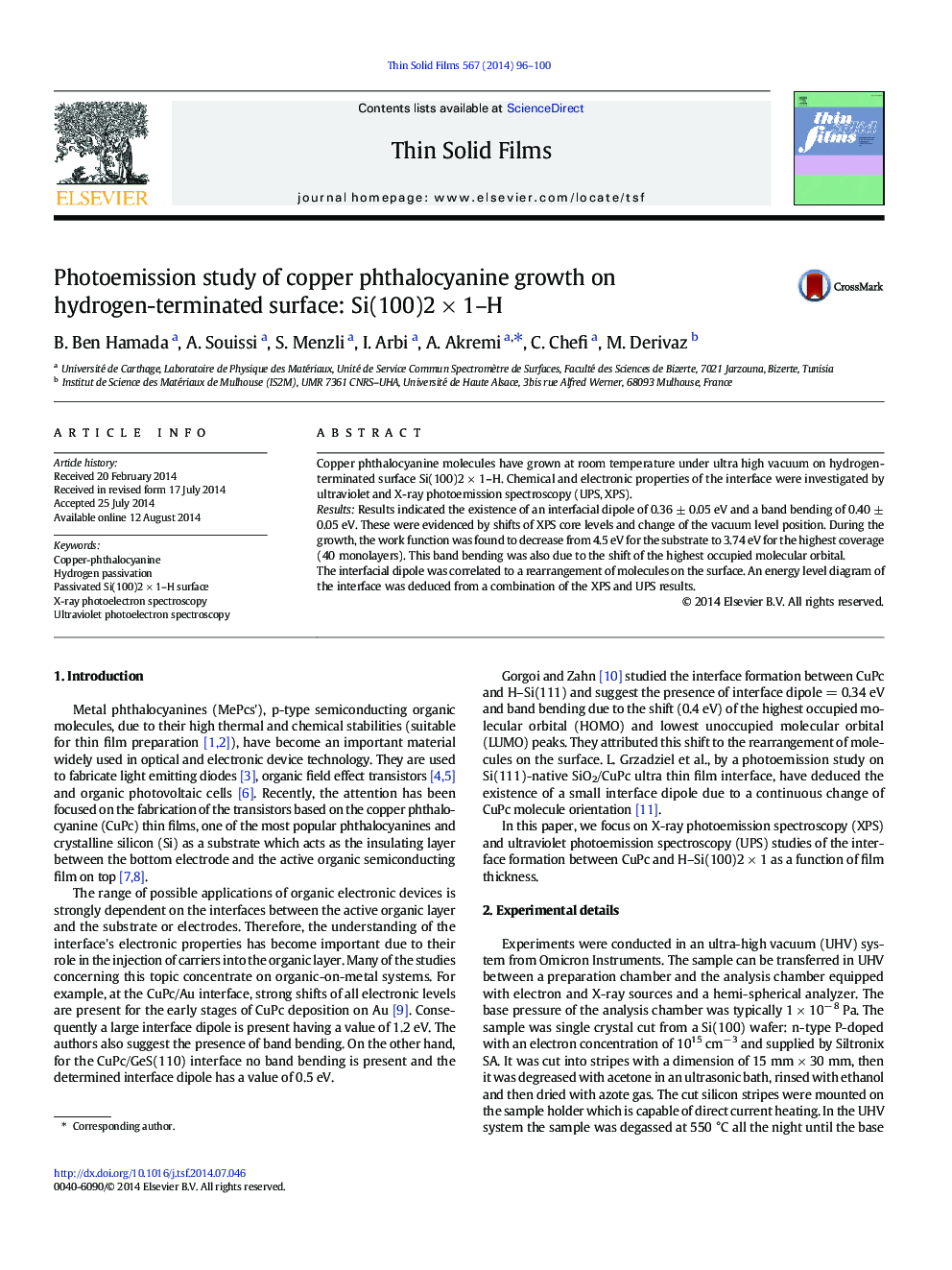| Article ID | Journal | Published Year | Pages | File Type |
|---|---|---|---|---|
| 1665332 | Thin Solid Films | 2014 | 5 Pages |
•Ultra thin films of cooper phthalocyanine were grown on Si(100)2 × 1–H surface.•Investigation was in situ by UPS, XPS and LEED.•Results indicated the existence of an interfacial dipole and a band bending.•The interfacial dipole was correlated to a rearrangement of molecules on the surface.•An energy level diagram of the interface was deduced.
Copper phthalocyanine molecules have grown at room temperature under ultra high vacuum on hydrogen-terminated surface Si(100)2 × 1–H. Chemical and electronic properties of the interface were investigated by ultraviolet and X-ray photoemission spectroscopy (UPS, XPS).ResultsResults indicated the existence of an interfacial dipole of 0.36 ± 0.05 eV and a band bending of 0.40 ± 0.05 eV. These were evidenced by shifts of XPS core levels and change of the vacuum level position. During the growth, the work function was found to decrease from 4.5 eV for the substrate to 3.74 eV for the highest coverage (40 monolayers). This band bending was also due to the shift of the highest occupied molecular orbital.The interfacial dipole was correlated to a rearrangement of molecules on the surface. An energy level diagram of the interface was deduced from a combination of the XPS and UPS results.
